Hair Germ Model In Vitro via Human Postnatal Keratinocyte-Dermal Papilla Interactions: Impact of Hyaluronic Acid
January 2017
in “Stem cells international”
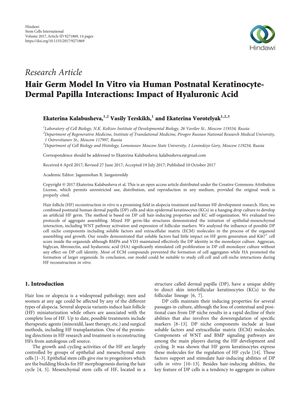
TLDR Adding hyaluronic acid helps create larger artificial hair follicles in the lab.
In a study from 2017, researchers developed an artificial hair follicle germ in vitro by combining human dermal papilla (DP) cells and skin epidermal keratinocytes (KCs) using a hanging drop culture technique. This method leveraged the hair-inducing properties of DP cells and the self-organizing ability of KCs. The team evaluated two protocols for assembling the germ-like structures and found that these structures initiated epithelial-mesenchymal interaction, including WNT pathway activation and expression of follicular markers. They investigated the role of DP cell niche components, such as soluble factors and extracellular matrix (ECM) molecules, in organoid assembly and growth. Soluble factors had minimal impact on hair follicle germ generation and cell proliferation within the organoids, although BMP6 and VD3 effectively maintained DP cell identity in monolayer culture. ECM compounds generally inhibited cell aggregate formation, but hyaluronic acid (HA) was found to promote the formation of larger organoids. The study concluded that their model could be useful for studying cell-cell and cell-niche interactions during hair follicle reconstruction in vitro.
View this study on downloads.hindawi.com →
Cited in this study
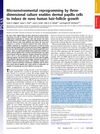
research Microenvironmental reprogramming by three-dimensional culture enables dermal papilla cells to induce de novo human hair-follicle growth
Growing human skin cells in a 3D environment can stimulate new hair growth.
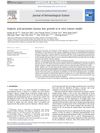
research Valproic acid promotes human hair growth in in vitro culture model
Valproic acid may help hair grow and could be a safe treatment for hair loss.
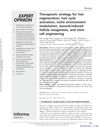
research Therapeutic strategy for hair regeneration: hair cycle activation, niche environment modulation, wound-induced follicle neogenesis, and stem cell engineering
The conclusion is that hair growth can be improved by activating hair cycles, changing the surrounding environment, healing wounds to create new hair follicles, and using stem cell technology.
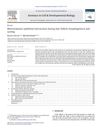
research Mesenchymal–epithelial interactions during hair follicle morphogenesis and cycling
The conclusion is that certain cell interactions and signals are crucial for hair growth and regeneration.
research Hairy tale of signaling in hair follicle development and cycling
Hair growth and development are controlled by specific signaling pathways.
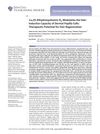
research 1α,25-Dihydroxyvitamin D3 Modulates the Hair-Inductive Capacity of Dermal Papilla Cells: Therapeutic Potential for Hair Regeneration
Vitamin D3 can help improve hair growth by enhancing the function of specific skin cells and could be useful in hair regeneration treatments.
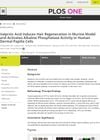
research Valproic Acid Induces Hair Regeneration in Murine Model and Activates Alkaline Phosphatase Activity in Human Dermal Papilla Cells
Valproic Acid helps regrow hair in mice and activates a hair growth marker in human cells.
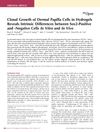
research Clonal Growth of Dermal Papilla Cells in Hydrogels Reveals Intrinsic Differences between Sox2-Positive and -Negative Cells In Vitro and In Vivo
Sox2-positive dermal papilla cells have unique characteristics and contribute more to skin and hair follicle formation than Sox2-negative cells.
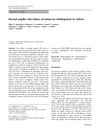
research Dermal papilla cells induce keratinocyte tubulogenesis in culture
Skin cells can help create early hair-like structures in lab cultures.
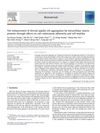
research The enhancement of dermal papilla cell aggregation by extracellular matrix proteins through effects on cell–substratum adhesivity and cell motility
Skin cell clumping for hair growth is improved by a protein called fibronectin, which helps cells stick and move better.
research A Human Folliculoid Microsphere Assay for Exploring Epithelial– Mesenchymal Interactions in the Human Hair Follicle
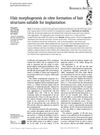
research Hair morphogenesisin vitro: formation of hair structures suitable for implantation
Scientists created early-stage hairs from mouse cells that grew into normal, pigmented hair when implanted into other mice.
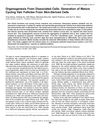
research Organogenesis From Dissociated Cells: Generation of Mature Cycling Hair Follicles From Skin-Derived Cells
Scientists have found a way to create hair follicles from skin cells of newborn mice, which can grow and cycle naturally when injected into adult mouse skin.
research Dynamic expression patterns of tenascin, proteoglycans, and cell adhesion molecules during human hair follicle morphogenesis
Specific proteins and molecules play key roles in the development of human hair follicles.
Related
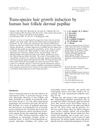
research Trans‐species hair growth induction by human hair follicle dermal papillae
Human hair follicle cells can grow hair when put into mouse skin if they stay in contact with mouse cells.